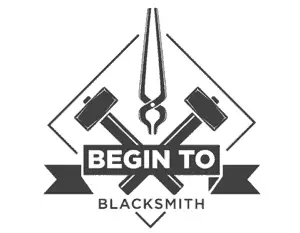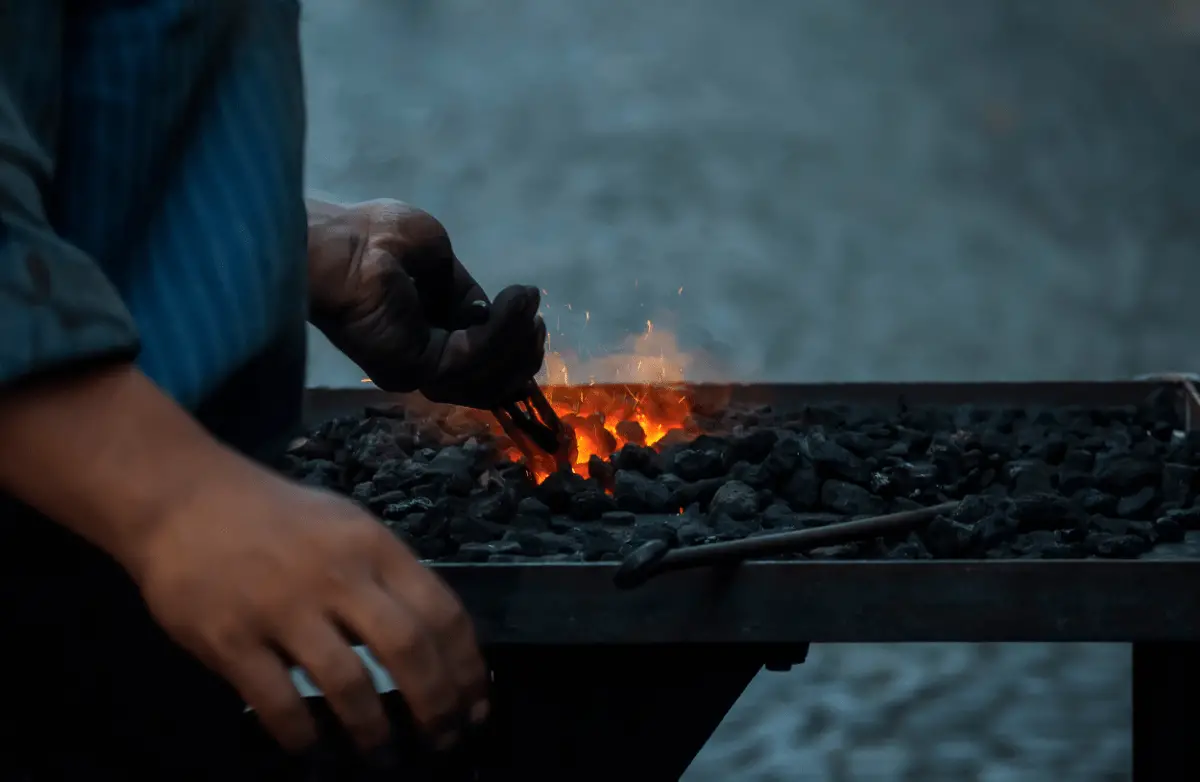When I first started out as a blacksmith a couple of years ago, I wish I had someone to point out all the little mistakes I was making in my work. Believe it or not, most of the time, blacksmiths that have just started out (or even those that have a few months of experience) are making several crucial mistakes that are seriously holding them back.
Although you might not have the privilege of having an expert blacksmith look over your shoulder, you can learn from my mistakes. If you keep your eyes out for these five crucial mistakes that most beginners make and avoid them, you’ll be well on your way to becoming an expert at the craft in no time.
Mistake #1: Do Your Research
Know what you want to make and study how to make it. If you’ve never made a knife before, don’t just wing it. Study every single part of the design. How do you make the handle, how do you sharpen the blade, etc?
Most of the time, beginner blacksmiths will watch a YouTube video or read a blog post and think they have a good enough idea of how to make something. What ends up happening, however, is that you’ll end up getting stuck on one particular area that you didn’t consider before, and you won’t know what to do.
For example, in my recent guide on how to make a rapier, I mentioned how the toughest part isn’t necessarily forging the blade. Instead, it’s making the pommel, the handle, and the wrist guard. While the blade tends to be the first thing that comes to mind, it’s actually one of the easiest things to do.
No matter what project you’re undertaking, make sure you have a thorough understanding of every step you need to take. That way, you’ll save so much time that otherwise would be wasted trying to find out how to properly do one small step that you didn’t realize would be so difficult.
Mistake #2: Learn the PROPER Way to Swing a Hammer
It might sound funny to some, but most beginner blacksmiths actually don’t know how to properly swing a hammer. How do I know? Because for most beginners, after a few weeks of smithing, they’ll start to develop the all too infamous “Blacksmith’s Elbow.”
Also known as tennis elbow for those tennis players out there, swinging you hammer with poor form will end up sending the reverberations into your arm and into your elbow. From there, your ligaments and tendons will get sore, and you’ll have trouble moving your elbow. It’s not a fun condition, and you’re going to need to put blacksmithing to the side until it goes away. That’s going to be days, if not weeks, of rest before you’re back to business.
The right way to hold a hammer is that it should be pointing at an angle back to the floor behind you. Keep your body straight, and your elbow relaxed. When you swing the hammer, your body should pull downwards to the anvil until you hit your metal. The whole process should feel like a whip those snap originates from your feet, travels up to your body, and crescendos at the moment where you hit your hammer on the anvil.
Mistake #3: Master Your Fire and Know Your Forge
In the past, I’ve strongly recommended beginner blacksmiths looking to get a forge to consider going gas-powered. While coal and wood-powered forges definitely have that ‘traditional’ feel to them, they are far from perfect. In fact, they tend to be a little tricky for beginners to use. Although it’s true that gas forges are much simpler in this regard, each model or brand is different and reacts differently as you use it.
In this regard, you need to master your fire and know your forge like the back of your hand. How does it react when you put fresh coals on it, or how it responds when you let more gas into the forge? Where is the hottest spot in your forge or fire? Where is the temperature weakest?
To truly become a good blacksmith, you need to know exactly what your metal will heat up to at certain temperatures color-wise. However, you also need to know the colors of your flame as well.
Mistake #4: Are You Truly Safe?
It might sound a little patronizing, but are you sure you have all your bases covered? If you’re using a gas forge, do you have a carbon monoxide detector nearby? Are you properly ventilating your forge? Do you have a fire extinguisher nearby? Have you considered potential IR and UV protection while your blacksmithing?
When you’re eager to get started with a new project, it’s easy to think that you’re safe enough and that you have your bases covered. However, all it takes is one small mistake for things to go horribly wrong.
That piece of scrap metal you have lying around; are you sure it’s safe to be heated up? Are you sure it is not galvanized and won’t release potentially toxic fumes if you heat it up in a forge?
What about your ears? Do you have adequate protection? You might not think it’s a big deal, but the constant clanging of the hammer on an anvil will end up damaging your hearing over time.
It doesn’t take long for a complete beginner to get used to heating up metal at a temperature around 2,000 degrees or more. However, don’t lose respect for how quickly things can go awry and potentially hurt you if you’re careless. Be careful!
Mistake #5: Spending too much money on non-essentials
There are things that definitely make good investments in your blacksmithing career. A solid forge, some hammers, an anvil, maybe some books or even a blacksmithing course or lessons. However, I know plenty of beginners that spend thousands of dollars on all sorts of fancy, exotic equipment that they will never end up using.
It’s kind of like the person who wants to start going to the gym. Instead of just starting, they end up spending all this money on gym shoes and a track outfit and all sorts of other stuff. However, they fail to realize that the most important thing is actually getting to work, rather than spending money on this superfluous stuff.
It’s the same thing with blacksmithing. So many people spend so much money on all this extra stuff they don’t need rather than just getting started. Don’t get me wrong, I’m all for getting quality equipment. But if you’ve literally never even swung a hammer in your life, you don’t need to spend tons of money to get started.
Check out my guide on how to start blacksmithing for less than $200 to get some ideas on how you get started for cheap. Once you have a bit of experience and want to take things a step further, then go ahead and invest some more money into equipment, courses, books, etc.
Final Thoughts
Blacksmithing should be something that’s fun and exciting. Getting to make your own crafts, whether that be knives, blades, ornaments, or other metalworking projects altogether, should be fun.
However, there comes the point where you need to begin to seriously invest in your skills if you want to get better. That doesn’t mean things become a chore now, but you’re going to need to make some tweaks and work on yourself. The good news is as you get better, more complicated projects that previously were outside your comfort zone will soon seem easy to you.
If you keep these five things I’ve mentioned in mind, you’d be surprised at how much better you’ll be as a blacksmith!

